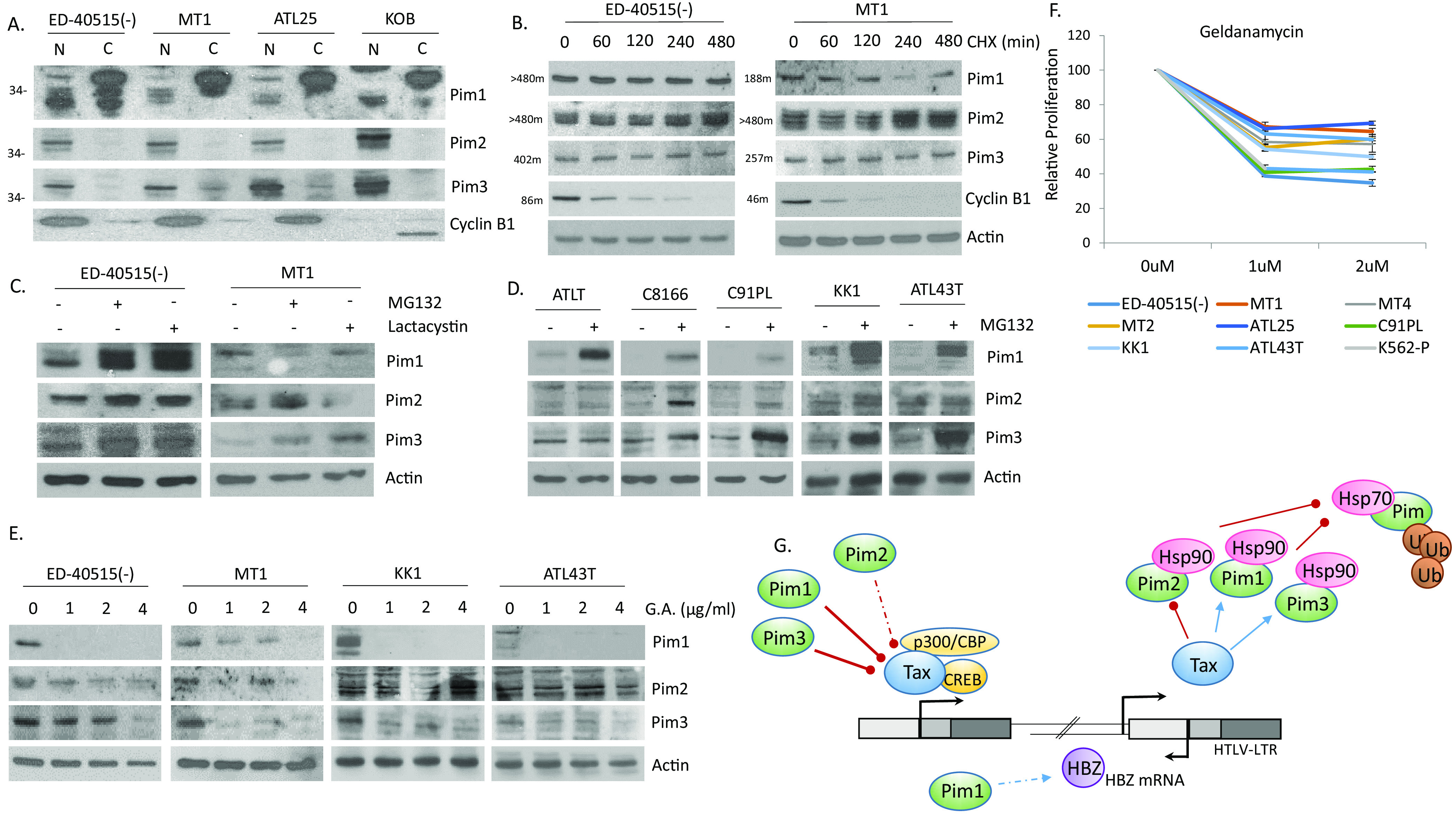FIG 10.

Pim kinase expression is stabilized in ATL cells through Hsp90. (A) Nuclear and cytoplasmic extracts of ATL lines, ED-40515(-), MT1, ATL25, and KOB. Cyclin B1 served as control for subcellular fractionation. (B–D) Analysis of Pim kinase protein stabilization following treatments with (B) cycloheximide (100 μg/mL CHX for 0, 2, 4, 6, or 8 h) in ED-40515(-) and MT1 ATL-derived cells, with (C) proteases (10 μM MG132 and 1 μM Lactacystin for 6 h) in ED-40515(-) and MT1 ATL-derived cells, and with (D) protease (10 μM MG132 for 6 h) in ATLT, C8166, C91PL, KK1, and ATL43T cells. For (B–D) actin expression served as a loading control. For (B) Cyclin B1 degradation confirmed that CHX treatment was working. Half-life of each protein is labeled next to the gel. (E–F) Pim kinases are stabilized by heat shock proteins in ATL-derived lines. ED-40515(-), MT1, KK1, and ATL43T cells were treated with the heat shock inhibitor, geldanamycin (1, 2, 4, or 6 μg/mL GA for 24 h). Whole cell lysates were analyzed for Pim protein expression (E). Actin served as a loading control. Proliferation, after GA treatment, was measured with XTT assays (F). Results were carried out in duplicate and calculated as a fold change compared with cells treated without GA. (G) Illustration of feedback loops between Tax/HBZ proteins and Pim kinases. Tax can drive the expression of Pim-1 and Pim-3, possibly contributing to the cellular transformation of T-cells. However, Pim-1, -2, and -3 and HBZ can also inhibit Tax expression, leading to loss of HTLV-1 transactivation and viral replication. This may allow for immune escape and viral latency. Pim kinase levels are stabilized in ATL cells through interaction with heat shock protein, Hsp90, which protects Pim kinases from degradation.
